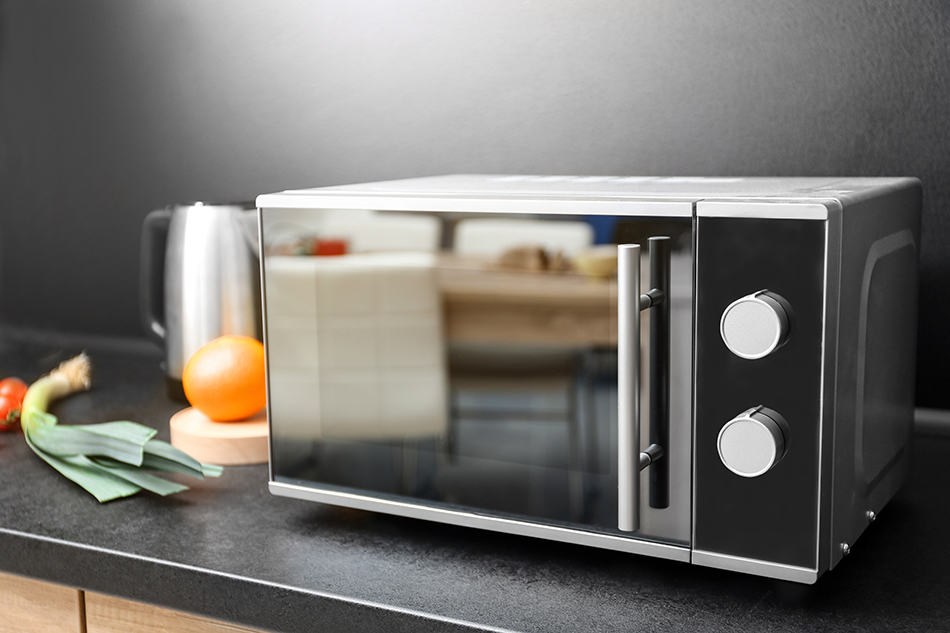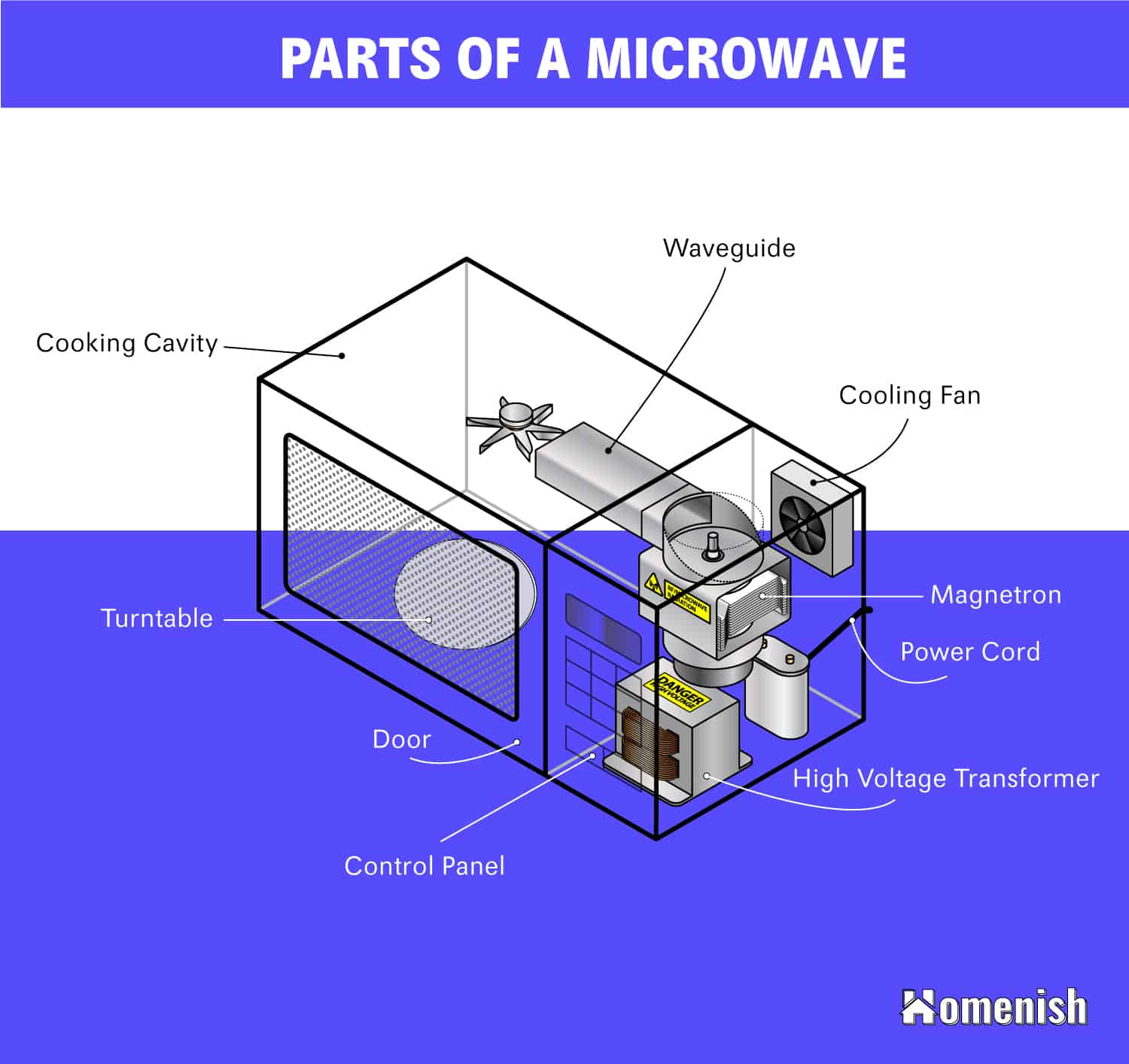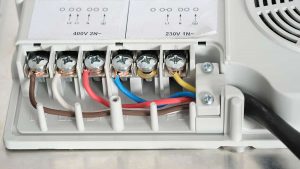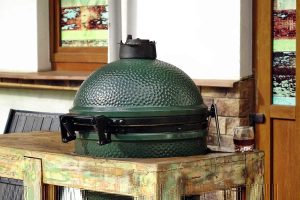Most homes have a microwave in their kitchen, which is used for defrosting or cooking food on a regular basis; however, the inner workings of this common appliance remain a mystery to most people. To learn about how a microwave works, we need to understand the main components and how each of those parts works and relates to other components. Here we break down the main parts of a microwave oven and uncover what each part does.
High Voltage Transformer
Microwaves require a high voltage of electricity to effectively function and heat food, usually at a minimum level of between 3000 or 4000 volts. Standard power outlets in the United States provide just 115 volts of electricity and therefore require a transformer to alter the power level and provide an adequate voltage to the appliance. This is where the high voltage transformer comes in, as it is able to convert the voltage to a much higher level. To do this, it uses a range of capacitors that loop electrical currents to multiply their power, and thereby supplying the microwave with the power it needs to run.
Magnetron
This part of a microwave receives the high voltage of electricity supplied by the transformer and converts it into microwave energy to heat the food. The magnetron does this with the use of a specially created diode, which controls electrons using magnetic fields. There are two ring-shaped magnets that deflect the electrons, causing them to move in a circular direction and prevent them from shooting off.
As the electrons quickly pass through cavities in the anode, it creates microwaves. When microwave ovens were first invented, the magnetron was very large, which is why older microwaves are significantly bigger than modern microwaves. As technology has improved, magnetrons are able to be smaller, allowing for the entire appliance to be downsized.
Waveguide
The waveguide is just that; a component of the microwave oven that guides the waves. It is a hollow tube made from metal, which transmits and directs the microwaves produced by the magnetron towards the cooking cavity or chamber. The inner walls are reflective, allowing the microwaves to bounce back and forth while also offering an important safety function as they do not allow the waves to escape and therefore protect nearby people from injury. The microwaves reflect back and forth from the waveguide in the cavity, passing through the food as they do so, and causing it to heat up.
Cooling Fan or Stirrer
Just like other heating appliances, a microwave oven is at risk of overheating and therefore contains a cooling fan to prevent this from happening. The cooling fan in a microwave works to dissipate the heat produced by the oven, ensuring it remains at a safe level. Older microwaves did not have cooling fans but instead featured a stirrer fan which was designed to do the same thing. The stirrer would be fitted at the top of the microwave oven within the cooking cavity and worked to circulate the microwaves to help ensure even heating of the food and prevent overheating.
Cooking Cavity and Case
The cooking cavity is the central hollow part of a microwave where food is placed to be cooked, warmed up, or defrosted. The cooking cavity tends to be quite small compared to the size of the entire microwave, which might seem unusual compared to other cooking appliances, where the size of cooking space is similar to the overall size of the appliance. Microwaves produced by microwave ovens are harmful to humans, and so it is important to keep these contained and away from people. This is why the cavity on a microwave is so deep, with thick walls to provide optimum safety for the user. When the user shuts the door of a microwave, it forms a sealed container through which no microwaves are able to escape.
Turntable
The turntable is a glass plate inside the microwave cavity, which is usually removable to make for easy cleaning. The purpose of the turntable is to rotate the food around so that it cooks more evenly, avoiding hot or cold spots. The turntable slots onto the bottom of the microwave cavity using ridges, allowing it to easily lock into place.
Door
The door of a microwave is there to allow the user easy access to the inner cavity for placing or removing plates of food. However, it has a much greater and more important function, which is to seal the microwaves inside the cooking cavity to prevent injury to the user. Microwave doors have seals along the edge to ensure a secure compartment is created when the door is closed. This prevents any microwaves from leaking out of the edges and causing burns.
The door of a microwave features a transparent piece of glass that operates as a window, allowing the user to keep an eye on their food. This is useful so that they can turn the appliance off if food starts to get so hot that it looks like it may explode or become ruined. However, to prevent microwaves from getting through the glass, the window is fitted with metal mesh. The holes in the mesh are large enough to allow the user to see into the cooking cavity but small enough to prevent microwaves from passing through.
Control Panel
The control panel is the part of the microwave oven, which allows the user to dictate what action they want the appliance to perform. Depending on the type of microwave, the control panel might be operated with a knob or with buttons. Using this, you can set the length of time and intensity of the microwave’s cooking and select different operations such as defrost mode or grill mode. The control panel on a modern microwave will typically feature a digital display that counts down the amount of cooking time the microwave has left.
Power Cord
The power cord on a microwave connects the appliance to the power outlet, supplying it with mains electricity.







